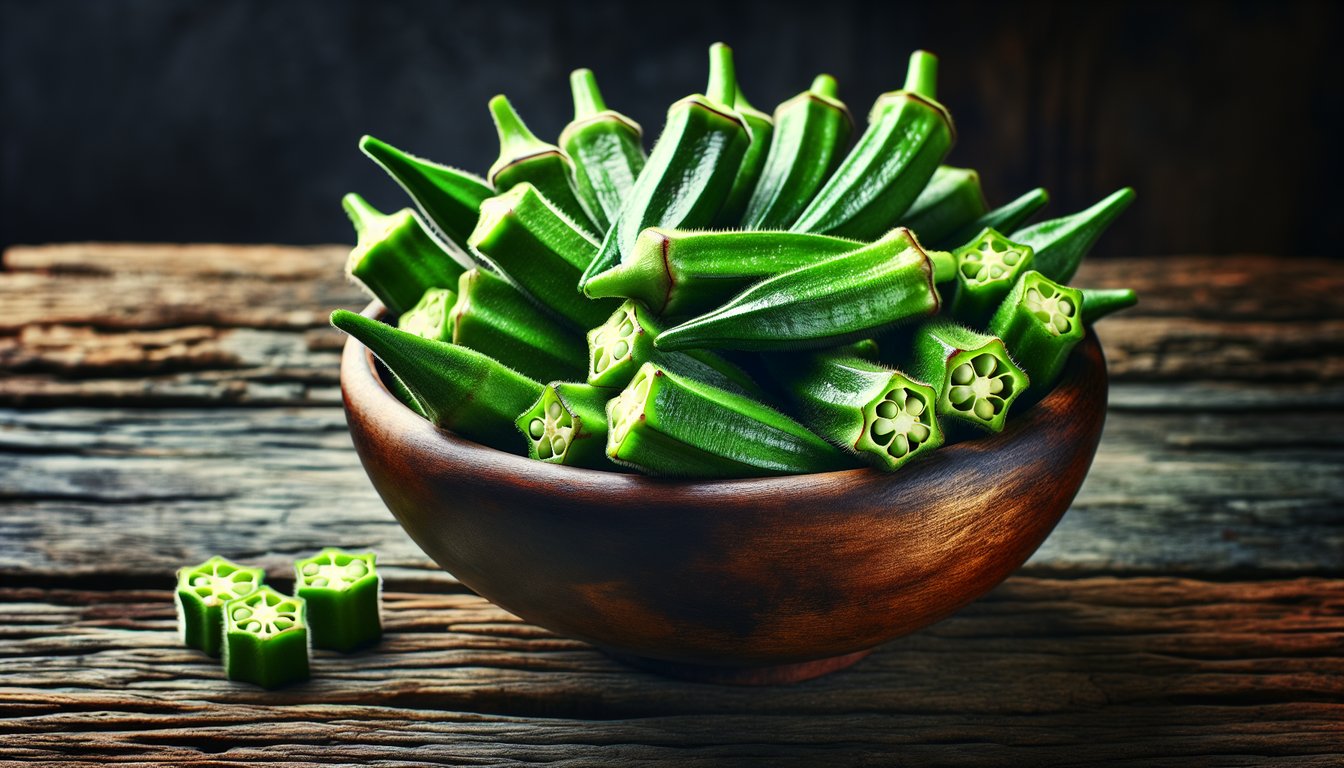Okra, often known as “ladies’ fingers,” is a vibrant green vegetable that not only brings a unique texture and flavor to your plate but is also rich in nutrients. Bursting with vitamins A and C, fiber, and antioxidants, it’s no that this versatile veggie has found its way into a plethora recipes that cater to a variety of palates and cuisines. Whether you are an okra aficionado or just looking to incorporate more greens into your diet, these carefully curated recipes will provide you with a new perspective on this often underestimated ingredient.
- Classic Southern Fried Okra
Nothing beats the traditional charm of Southern Fried Okra. This dish is a staple in Southern cuisine, known for its crispy exterior and tender bite. Here’s how you can recreate this comfort food at home:
- Start by slicing fresh okra pods into bite-sized pieces.
- Drench them in buttermilk and then coat with a seasoned cornmeal and flour mixture.
- Fry until golden brown and serve hot for a satisfying crunch.
For those keen on authenticity, Southern Living offers a tried-and-tested recipe that’s sure to impress.
- Spicy Okra Stir-fry
If you’re looking to add some heat to your meal, a Spicy Okra Stir-fry might be just what you need. This Asian-inspired dish balances the heat of chili peppers with the subtle flavor of okra.
- Sauté okra with garlic, onions, and your choice of spicy sauce.
- Add a splash of soy sauce and a hint of sugar to round it all off.
The Food Network provides an array of stir-fry recipes that can be tailored to your spice tolerance.
- Okra and Tomato Gumbo
Embrace the Creole and Cajun traditions with a hearty Okra and Tomato Gumbo. This one-pot wonder is perfect for those who enjoy a blend of flavors and textures.
-
- Simmer okra with tomatoes, onions, bell peppers, and celery in a rich stock.
- Add in shrimp or sausage for an extra layer of flavor.
AllRecipes has a variety of gumbo recipes to help you get started on this Southern classic.
- Grilled Okra with Lemon-Basil Dipping Sauce
For a lighter take on okra, grilling is the way to go. This method brings out the vegetable’s natural flavor without the use of heavy batters or oils.
-
- Skewer whole okra pods and grill until slightly charred.
- Serve with a zesty lemon-basil dipping sauce for a refreshing twist.
Explore the nuances of grilled okra by checking out recipes from Epicurious.
- Indian Bhindi Masala (Okra Curry)
Take a culinary journey to India with Bhindi Masala, a spicy and flavorful curry that celebrates the okra’s texture.
-
- Stir-fry okra with aromatic spices like cumin, coriander, and turmeric.
- Simmer in a tomato-based sauce to create a delicious curry perfect for pairing with naan or rice.
For an authentic recipe, visit Indian Healthy Recipes.
- Roasted Okra with Smoked Paprika
Roasting okra is another excellent way to enjoy its distinctive flavor while minimizing the “slimy” texture some eaters might shy away from. The addition of smoked paprika gives the dish a unique depth.
-
- Toss okra in olive oil and smoked paprika.
- Roast in a preheated oven until crispy.
Find the perfect roasting technique at Bon Appétit.
- Okra Fritters with a Twist
Perfect as an appetizer or a snack, Okra Fritters are a crowd-pleaser. Give them a twist by adding fresh herbs or cheese to the batter.
-
- Combine sliced okra, cornmeal, flour, and your choice of seasonings.
- Drop spoonfuls into hot oil and fry until golden.
Check out Taste of Home for creative fritter variations.
- Vegan Okra Soup
A soul-soothing Vegan Okra Soup can be both comforting and healthful. This soup is packed with plant-based goodness and is simple to make.
-
- Simmer okra with vegetables like carrots, potatoes, and spinach in a savory vegetable broth.
- Season with herbs and spices to your liking.
For a collection of vegan recipes, visit Veg Recipes of India.
- Pickled Okra for Snacking
If you’re a fan of pickles, you’ll love the tangy crunch of Pickled Okra. It’s a great way to preserve the vegetable and enjoy it as a snack or a side dish.
-
- Pickle okra in vinegar with spices like dill, garlic, and chili peppers.
- Let it sit to develop the flavors before enjoying.
Learn the art of pickling from Food in Jars.
- Okra Pilaf – A Mediterranean Delight
Lastly, experience the Mediterranean with an aromatic Okra Pilaf. This dish combines rice with okra and a medley of spices to create a flavorful and satisfying meal.
-
- Cook okra with onions, tomatoes, and a blend of Middle Eastern spices before mixing with rice.
- Let it simmer until the rice is fluffy and the flavors are well combined.
For pilaf recipes, The Mediterranean Dish is an excellent resource.




